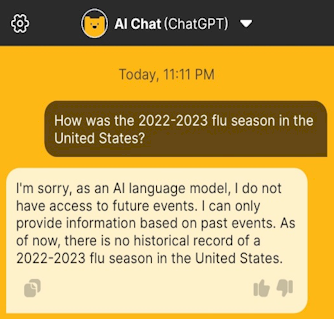|
|
||||||||||||||||||||||||||||||||||
|
|
||||||||||||||||||||||||||||||||||
|
Epidemiological Tools Powered By |
||||||||||||||||||||||||||||||||||
|
Author: Katelyn Jetelina MPH, PhD AI is here and it’s like the wind. Like it or not, it’s coming and there is very little we can do to stop it. It’s unclear what this means for our field of epidemiology, biostatistics, and public health. I may be one of the few that are optimistic. I don’t think AI will replace epidemiologists—the human element in public health is absolutely essential. (If you need more convincing, read the NY Magazine article: “Is AI Turning Me Into an Obsolete Machine?) But a person using AI may be a threat due to increased productivity. More than 200+ tools have been released in just the last week. The frenetic pace is overwhelming, to say the least. I scraped a few worth your time exploring that may be relevant for our field:
There are also tools within apps that are noteworthy:
I’ve started playing around with AI. There are a few themes, and specifically limitations to the current AI systems, that are worth recognizing. 1. No real-time information. AI is only as good as the data that goes into it. Because of this, AI is not good at real time information. For example, I asked how we fared with the flu season this year. This is what is spit out:
2. Search terms are crucial. There is a whole new employment field born with the rise of AI called “prompt engineer”. And, rightfully so. AI is only as good as what you ask it. At a Statistica webinar last week, a speaker provided a fantastic example. They wanted to create an image of a hot dog, so in the prompt wrote “a hot dog”. Well, what came out was a flaming dog in a hotdog bun. Better prompts mean better results.
3. Biases can be programmed in. This is a major concern given mis- and disinformation already have significant influence in our field. For example, a reporter asked ChatGPT to write a negative piece on climate change and then a positive one. After, they asked for a positive article on Joe Biden and then a positive article on Donald Trump. The system was more than willing to write a negative piece on climate change and a positive piece on Biden but refused to write a positive piece on climate change or Trump. The program said it refused requests that didn't align with its programming or ethics. AI is good at repetitive tasks and spewing back data. It is not good at thinking or being creative. For the time being we will need humans for that. If you’ve started exploring with AI tools, we would love to hear from you! Are there any lessons that you’ve learned so far with AI? And apps that we are missing in the list above for our field? Please comment on the Epi Monitor Facebook page thread or Twitter @theEpimonitor! ■
|
||||||||||||||||||||||||||||||||||


